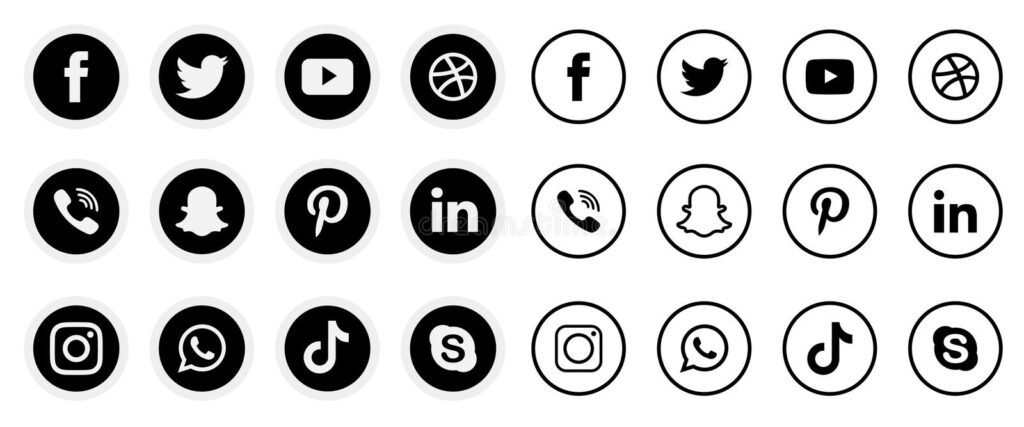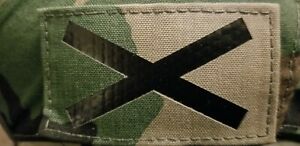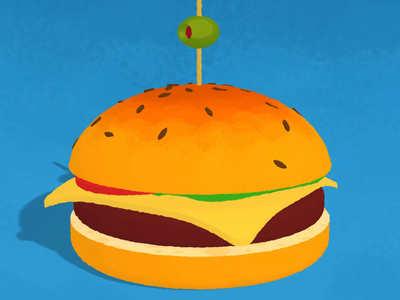How we present ourselves certainly matters to us.
Here’s a peek behind the curtain; among the ISG contributors and owners there has been plenty of discussion about editing and production value. Recently, we’re more aware of our faults than ever — and are endeavoring to amp up the quality of content when and where we can. This has caused a few of us to pay attention to contemporaries in a way we previously hadn’t. We pride ourselves on creating articles that come from organic views and experiences. We understand the dangers of telephone-game instruction, as well as unintended copy-cat styles that can creep in from being a bit too influenced by those that surround you.
Of course, we found places that we think match our goals very well. And, of course, we found plenty that didn’t. There is a lot of junk social media out there, that isn’t something I think anyone reading here will find surprising. But I did want to address it in a way that may be actually useful.
This won’t be a call-out article. There’s very little value in that. What you can expect here is my rough rubric for approaching social media and a very cursory book report on Simulation and Simulacra, a philosophy book that’s foundational to modern advertising. The goal is to share perspective tools in hopes that you’ll find utility in the same way that I do.

UNDERSTANDING THE PLATFORM
The first step, in my estimation, is to understand the platform that you’re engaging in.
YouTube, Instagram, or TikTok all have different goals and algorithms to get your views. Sure, the end-goal of delivering you advertisements is the same, but their method of soliciting your views will be different. This is a very easy spot to pick on clickbait content makers. Often, such clickbait is the only way to generate views. Whether you hate the player or hate the game is up to you.
Instagram is one that you’ll find us on. It’s my go-to platform for wasting time. The photos are a simple item to scroll through. As such, to get you to stop on a picture long enough to engage in algorithm-boosting activities (likes, shares, comments), one must pack quite a lot of visual appeal into a photo. Ergo, it can be safely assumed that a photo that wasn’t staged for the specific purpose of social media is very rare on Instagram. The platform is premised upon the opportunity to curate a very specific identity, any smart page will take advantage of that if they want success.
TikTok isn’t very different. Being centered around short video clips, they have the same problem of packing quite a lot into a small package to garner the attention they need. Facebook is a leviathan that I won’t venture to skewer in this article.
Youtube is where most gun-guy media will congregate. Shooting is an activity, so it makes sense that the platform which allows for more long-form content reigns supreme. You’ll find the whole gamut here from history buffs, to instruction, to advertisements, etc. There are many avenues through which content creators try to get clicks and views. At the end of the day, though, they’re all selling something. Some are forthright about that, some aren’t. But they need not be a variable in remembering who the salesperson is so long as you do.
Does all this make social media bad? No, it can be fun. “The poison is in the dose,” is the old adage that explains why the arsenic in a granny smith apple doesn’t kill you. Likewise, a few cool snapshots or fun videos between catching up on your friends and family is pretty harmless. However, I certainly wouldn’t be writing this article if I hadn’t encountered scores of people who didn’t have a good approach to social media. There is, sadly, a lot of copycat consumerism in the gun community that parades itself as preparedness.

SIMULATION AND SIMULACRA
Simulation and Simulacra is a book by French philosopher Jean Baudrillard. Its main hallmark is the definition of simulation and how it applies to our modern world – specifically in advertising. He is a French philosopher, at the end of the day, so much of it lashes out at capitalism ad nauseum. Please don’t throw the baby out with the bathwater, he’s got good ideas underneath the soup-du-jour politics. I’ll cover my understanding of it in as brief a way as possible. For a full understanding, consult the source material.
Simulation is anytime an image or symbol that acts as a stand-in for reality. There are degrees to this, and the scale slides depending on how faithfully a form of media is portraying reality. I will try and demonstrate the stages with a fast food burger:
- The First Stage is an attempt to represent the genuine article as closely as possible. If you bought a burger from a fast food joint, set it on the counter, then took a photo, that’s first stage simulation. It’s not the actual burger, but it’s as faithful a representation of the burger as you can make. The photo is the real deal.
- Second Stage simulation is something you’ll know from advertisements. That same fast food joint will put a picture of a burger on a billboard, but it will be an amplified burger. They will sharpie on grill marks, hand-pick veggies and slam them on the camera side of the burger, and edit imperfections away mercilessly. What you see in that image will be entirely real burger components, but they will not be a faithful representation. They will be a ‘hyper’ version of the real thing.
- The Third Stage is when images or fabrications replace the genuine article all together. If a burger was rendered in a 3D modeling program to be animated into a commercial, that would be third stage simulation. It evokes the symbols and image of a burger, yet contains no actual burger. Simply, it is conjuring the positive connotations of what that burger is to entice you into buying an actual, yet tangibly unrepresented food.
- The Fourth Stage is pure simulacra, the phenomenon described when no attempts at reality are made, and symbols or signs supplant them entirely. Where “cultural products no longer even pretend to be real in a naïve sense” as Jean puts it. McDonalds doesn’t even need to show you a burger. All you need to see are the Golden Arches on the highway and you already know. Burger.

HOW THIS RELATES TO TACTICAL MEDIA
Now that we have a 101 understanding of simulation and simulacra, we can apply this to the gun media that we consume in a way that we can identify and contextualize it.
First Stage simulation will generally be the best type of media one can engage with. These are photos taken candidly while training. These are compilations of drills shown without editing out all of the flubs or slow performances. These are one-take lectures in which the information is presented in as faithful a representation as possible. Also under this umbrella can be things like dash cams or security footage. There is no attempt to portray events in any manner that isn’t as purely representative as possible.
The First Stage can be among the rarest material to come across on social media platforms. While it often can be the most fruitful, it simply doesn’t capture the attention of an audience in the way other stages of simulation do. The ability to identify it will help it stand out while you’re scrolling through that feed.
Second Stage simulation is the most popular by far. It presents itself mainly in the form of curation. Just about anyone is subject to the availability fallacy at times, which makes us think that what we see is all there is. My Instagram is full of some pretty slick guns. KAC rifles, Arsenal AK setups, DTNVG’s, Roland Specials, etc. If Instagram were my only view into the gun world I would likely come to think that if I wanted to participate in gun culture that I’d need to load a few thousand dollars on a credit card to have all the same stuff.
Is that the reality of the average gun owner? Of course not. Most home defense arsenals are made up of budget pump shotguns and deer rifles. M&P Shields and Ruger LCR’s make up a much larger portion of what concealed carriers own than any other pistol. Those are not sexy firearms, of course, and most Shield owners aren’t scrolling through their social media to see someone else carrying the same $300 used compact that they got. A high school baseball player doesn’t want to watch other high schoolers play baseball in their free time just the same. They watch the boys in the big leagues swatting laces and leather.

Beyond just the gear are ability and identity. Something we’re all likely guilty of is redoing ten takes of a mag change and posting only the fastest one. If posted to represent how fast we are capable of changing a mag once, that’s First Stage. However, if posting the fastest take to represent our general ability to change a mag repeatedly, we will have entered into the Second Stage.
Posting that one take without the context of all the other mag changes aims to deceive the audience into believing you have an inflated ability compared to reality. Nearly every youtuber, instagram poster, or even just discord shitposter engages in this. Some are better than others, but keep that in the back of your mind when you’re watching your favorite content maker. How often do they show their mistakes? How often are they leaving long single-takes in a video? There is magic in editing, and that magic imbues fake competence.
This isn’t entirely bad. There are some contexts in which this sort of thing can be useful. If I wanted to create an instructional video on how to apply a tourniquet, I’m not going to include takes of me not getting it right. I want you to practice correctly, and as such I wouldn’t include any incorrect material to muddy up my message. Though, if I told you I was reviewing a tourniquet and only showed it performing flawlessly despite having other takes of it failing, what would you think?
Third Stage simulation is rare but does exist in gun media. There are artists and animators that will use their stand-in as a ‘face’ for the content they’re putting out. The person giving medical advice may not have ever been a medical provider or practitioner, but they’re a lot easier to call out than a purely fabricated cartoon that they present for the audience as a stand-in.
We can make a mistake in thinking when viewing such things. There is an artist behind the art and many will believe that the cartoon they see is a representation of the person providing the information. A cartoon, of course, is entirely a fabrication. And a character can never be written smarter than their writer.

The Fourth Stage is pervasive. Often, it’s a consumer product that is valued beyond its physical utility; more so coveted for the imaginary social value it is interpreted to have. It’s only $10 to buy a PVC patch from Task Force Doomer, and in reality it does nothing but stick to velcro. But a purchase of that patch isn’t about reality, it’s about the pure simulacra of believing you’re a part of a culture that may or may not even really exist.
My favorite may be the Forward Observation hat and its popular play on the Patagonia logo. Talk about inception levels of simulacra! An outdoors brand that has become more popular with lawyers than hikers being co-opted by a tactical brand that caters to more couch potatoes than shooters. Pick one up for $20 and anyone who knows what that hat is will know what kind of person you are. That’s the point of buying one, right?
Often the point here is to advertise identity. I can rag on it all day if I wanted to, but I also remember that we have Responder Zero stickers in our store. A big context reminder here is that having an RZ sticker actually represents you, you’re a Responder Zero. What do you intend to represent about yourself with that Forward Observations hat?

Worn on the shoulder of a currently active Green Beret perhaps it means something. Perhaps it does. What does it mean worn on the shoulder of your airsoft uniform? What is it you’re trying the tell the world about yourself with this patch?
Conclusion
Yes, we all know social media is mostly fake. This isn’t mind-blowing news to anyone. But there has been good work done to break that idea down into more bite-sized pieces that are readymade for analysis. We’re students of such things. “Integrated” is in our name, and part of that includes perspectives and rubrics of thought to gain a wider view.
This is how we have endeavored to understand social media, and as a result, what we wrestle with when deciding what we’d like to share on it. We’ll do everything we can to remain faithful to reality and never try to leave that First Stage of simulation. Hopefully our approach can help you in your efforts or consumption of media as well.












